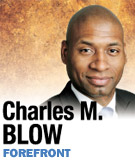Subscriber Benefit
As a subscriber you can listen to articles at work, in the car, or while you work out. Subscribe Now
 The stock market is hitting record highs.
The stock market is hitting record highs.
Bank profits are their highest in years.
The market for luxury goods is rebounding.
And there’s no shortage of billionaires. Forbes’ list of the world’s billionaires has added more than 200 names since 2012 and is now at 1,426. The United States once again leads the list, with 442 billionaires.
The rich are raking it in during this recovery.
But in the shadow of their towering wealth exists a much less rosy recovery, where people are hurting and the pain grows.
This is the slowest post-recession jobs recovery since World War II. The unemployment rate is falling, but an increasing number of people may simply be giving up on finding a job.
This disconnecting is particularly acute among young people. Measure of America, a project of the Social Science Research Council, recently released a study finding that a staggering 5.8 million young people nationwide—one in seven of those ages 16 to 24—are disconnected, meaning not employed or in school, “adrift at society’s margins.”
Median household income continues to fall, according to recent data from the Census Bureau. The data showed, “In 2012, real median household income was 8.3 percent lower than in 2007, the year before the most recent recession.”
And according to an April Pew Research Center report, “During the first two years of the nation’s economic recovery, the mean net worth of households in the upper 7 percent of the wealth distribution rose by an estimated 28 percent, while the mean net worth of households in the lower 93 percent dropped by 4 percent.”
The dire statistics take on even more urgency when we consider what they mean for America’s children.
According to First Focus, a bipartisan advocacy organization: “The 1,168,354 homeless students enrolled by U.S. preschools and K-12 schools in the 2011-2012 school year is the highest number on record. … The number of homeless children in public schools has increased 72 percent since the beginning of the recession.”
A report last month by the Carsey Institute at the University of New Hampshire bemoaned the stagnation of the child poverty rate in this country, saying, “These new poverty estimates released Sept. 19, 2013, suggest that child poverty plateaued in the aftermath of the Great Recession, but there is no evidence of any reduction in child poverty even as we enter the fourth year of ‘recovery.’”
Nearly one in four American children live in poverty.
A report last year from the National Poverty Center estimated “that the number of households living on $2 or less in income per person per day in a given month increased from about 636,000 in 1996 to about 1.46 million households in early 2011, a percentage growth of 130 percent.”
And yet a report last month by the Center on Budget and Policy Priorities found, “Cash assistance benefits for the nation’s poorest families with children fell again in purchasing power in 2013 and are now at least 20 percent below their 1996 levels in 37 states, after adjusting for inflation.”
The number of Americans now enrolled in the Supplemental Nutrition Assistance Program is near record highs, and yet both houses of Congress have passed bills to cut funding to the program.
There is an inherent tension—and obscenity—in the wildly divergent fortunes of the rich and the poor in this country, especially among our children. The growing imbalance of both wealth and opportunity cannot be sustained.•
__________
Blow is a New York Times columnist. Send comments to [email protected].
Please enable JavaScript to view this content.
